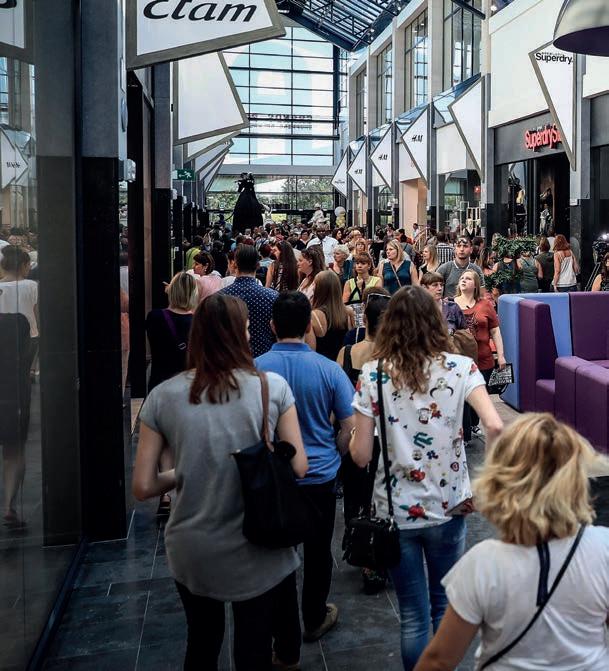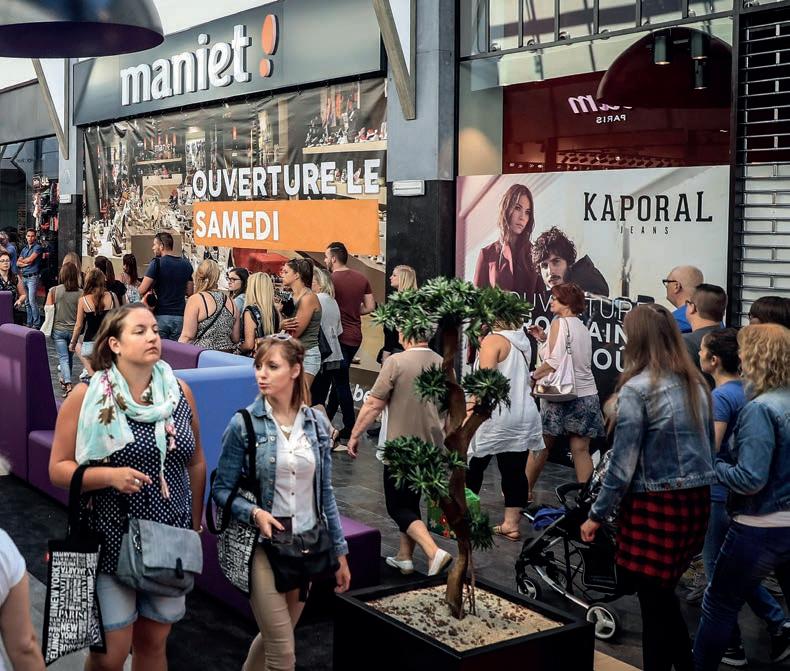
3 minute read
Pop-ups: very much appreciated with consumers
Pop-ups: very much appreciated with consumers
Vacancy rates in Belgian high streets are rising: in early 2019 about 10% of shops were unoccupied. For the first time, this study has now found that unoccupancy deters visitors. 1 in 3 Belgians are bothered by vacancies in shopping centers. Moreover, 1 out of 7 will come shopping less because of it.
Advertisement
Shopping mall managers and landlords have been trying to buck the trend for a while now, with all sorts of initiatives, including popup stores, which consumers are enjoying very much. Those were the findings of the annual shopping survey of 1,605 Belgians conducted by CEUSTERS, the largest shopping center manager in the country.
Pop-ups
Shopping center managers and landlords are attempting to buck the unoccupancy trend by bringing in pop-up stores and other temporary concepts. In the first 3 quarters of 2019 alone, the number of temporary rental agreements amounted to 5.6% of the total number of shopunits in shopping centers managed by CEUSTERS.
Vacancy rates
Both cities like Antwerp, Brussels, and Charleroi and towns such as SintNiklaas or La Louvière are facing the same issue: brick-and-mortar shops are having an increasingly hard time keeping afloat. This year, for the eleventh year running, unoccupancy in Belgian high streets is on the rise. Today 11.9% of shop properties are unoccupied. By way of comparison: when the economic downturn broke out in 2008, a mere 7.6% of commercial spaces wasn’t being used.
This year, about 7.4% of store properties in shopping centers are empty. But there are big di erences. Inner-city shopping centers are confronted with higher vacancy rates than their extra-urban competitors. According to experts, accessibility definitely factors in.

Hans Van Laer, Head of Marketing and Research CEUSTERS
And those pop-ups remain exceptionally popular. 6 out of 10 shoppers love pop-up stores (26% even love them very much, vs. 13% who don’t love them at all). Nearly 8 in 10 shoppers notice no quality di erence between pop-up stores and regular stores.
“Accessibility is a hot potato in the retail industry. Increased innercity vacancy rates are without a doubt also due to people finding it harder to get to cities or having to pay more for parking because of gridlock or bad accessibility. That’s why many retailers want to engage in even more dialogue with local authorities.”
Hans Van Laer, Head of Marketing and Research CEUSTERS
The reasons for the unoccupancy aren’t hard to find: fewer passers-by, more online orders, evolving consumer behaviour, and accessibility issues. Consequently, it’s not just the high streets dealing with empty storefronts, but shopping malls too.
CEUSTERS’ yearly survey—the biggest in Belgium, now on its fifth edition—is now, for the first time,
coming up with unique insights into what e ect vacancy rates have on shoppers. And it turns out unoccupancy doesn’t just bother shop owners and managers, but especially the thousands of visitors. No fewer than 1 in 3 Belgians (34.3%) indicate they’re annoyed by empty properties and spaces. One in 7 (14%) will even come shopping less because of them.
More youngsters, fewer pensioners
The annual survey found that the average Belgian shopper was 40 years old. That’s about 18 months younger than last year. What’s equally remarkable: shopping centers are attracting more young people. Specifically, the number of teenagers and twenty-somethings in shopping centers rose by 5.6% compared to last year. At the same time, fewer over-sixties are interested in a trip to the shopping mall. In 2018, more than 1 in 4 shoppers was over sixty—today, only 1 in 5 is.
When we go shopping, we like to take our time. More than half of Belgians (53.3%) shop for two hours or longer. The favourite things to spend our cash on in the shopping centers are: 44% clothes, 13% leisure, 12% personal care, 9% food and drinks, and 5% shoes.
“Many shopping malls our country have increasingly been banking on experiences for years now. They’re organising shows for children, fashion shows, but also expositions and even car shows. These are drawing in many young people. At the same time, there’s more of a focus on F&B operators, and everyone loves those.”
Hans Van Laer, Head of Marketing and Research CEUSTERS

6 shops on average
When we go shopping, we fork out an average of 81 euros. In many cases, this spend is for the whole family. More specifically, we can say that more than one out of two Belgians—56%, to be precise—spend between 25 and 125 euros on the average day of shopping. It may be a cliché, but women are still the most frequent shoppers: 64.5% of women versus 35.5% of men. Nice little factoid: we walk into 6 shops, on average. And finally: despite the climate discussion, 6 in 10 shoppers still drive their cars to the shopping center. Compared to last year, the number of shoppers using public transport has not increased, either.




